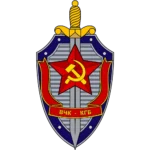
KGB
Agency: KGB (Komitet Gosudarstvennoy Bezopasnosti)
KGB:
Creation Date: December 20, 1917
Location of Headquarters: Moscow, Russia
Disestablishment Date: November 6, 1991
Leaders: Notable leaders include Felix Dzerzhinsky, Lavrentiy Beria, and Yuri Andropov.
Operational Focus: Initially focused on internal security and later expanded to include foreign intelligence.
Brief History: The KGB, or Komitet Gosudarstvennoy Bezopasnosti, was established in the aftermath of the Russian Revolution on December 20, 1917. Initially known as the Cheka, it evolved into the NKVD and later the KGB. The agency played a significant role in maintaining internal security, carrying out intelligence operations, suppressing dissent, and conducting counterintelligence activities. The KGB ceased to exist on November 6, 1991, with the dissolution of the Soviet Union.
Powers: The KGB had broad powers, including surveillance, investigation, and enforcement. It carried out operations to suppress political dissent, monitor and infiltrate dissident groups, and gather intelligence both domestically and internationally.
Notable Operational Activity:
Operation DENVER (1953): The KGB orchestrated the kidnapping and forced repatriation of Ukrainian nationalist leader Stepan Bandera from Germany to the Soviet Union. Bandera was assassinated by the KGB shortly after his arrival in Kyiv.
Operation PANDORA (1982): The KGB planted a bomb in a West Berlin nightclub frequented by American servicemen. The explosion resulted in the death of three people and injured more than 200 others. The operation aimed to create tension between NATO members and the West German government.
Operation TREST (1984): The KGB attempted to assassinate exiled Bulgarian dissident Georgi Markov in London. Markov was killed by a ricin-laced pellet fired from an umbrella. The operation was part of the KGB's efforts to silence critics of the Soviet regime.
